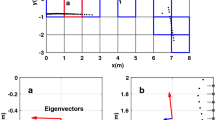Abstract
This paper describes a full probabilistic solution to the Simultaneous Localisation and Mapping (SLAM) problem. Previously, the SLAM problem could only be solved in real time through the use of the Kalman Filter. This generally restricts the application of SLAM methods to domains with straight-forward (analytic) environment and sensor models. In this paper the Sum-of-Gaussian (SOG) method is used to approximate more general (arbitrary) probability distributions. This representation permits the generalizations made possible by particle filter or Monte-Carlo methods, while inheriting the real-time computational advantages of the Kalman filter. The method is demonstrated by its application to sub-sea field data consisting of both sonar and visual observation of near-field landmarks.
Access this chapter
Tax calculation will be finalised at checkout
Purchases are for personal use only
Preview
Unable to display preview. Download preview PDF.
Similar content being viewed by others
References
Alspace D, Sorenson H (1972) Gaussian filters for nonlinear filtering problems. IEEE Trans. Automatic Control, 17(2):439–448.
Dissanayake G, Newman P, Durrant-Whyte H, Clark S, Csobra M (2000) An experimental and theoretical investigation into simultaneous localisation and map building (SLAM). In Corke P, Trevelyan J (eds) Experimental Robotics VI (ISER’99), pp 265–274. Springer-Verlag.
Guivant J, Nebot E, Baiker S (2000) Localization and map building using laser range sensors in outdoor applications. Journal of Robotic Systems, 17(10):565–583.
Hollerbach J, Koditscheck D (eds) (2000) Robotics research, the ninth international symposium (ISRR’99). Springer-Verlag.
Isard M, Blake A (1998) Condensation-conditional density propagation for visual tracking. International Journal of Computer Vision, 29(1):5–28.
Ito K, Xiong K (2000) Gaussian filters for non-linear filtering problems. IEEE Trans. Automatic Control, 45(5):910–927.
Julier S, Uhlmann J, Durrant-Whyte H(2000) A new method for the non-linear transformations of means and covariances in filters and estimators. IEEE Trans. Automatic Control, 45(3):477–482.
Kitagawa G (1996) A Monte-Carlo filter and smoother for non-Gaussian non-linear state space models. Journal of Computational and Graphical Statistics, 5(1):1–25.
Leonard J, Feder H (2000) A computational efficient method for large-scale concurrent mapping and localisation. In Hollerbach J, Koditscheck D (eds) Robotics Research, The Ninth International Symposium (ISRR’99), pp 169–176. Springer-Verlag.
Mazya V, Schmidt G (1996) On approximate approximations using Gaussian kernels. IMA J. Numerical Analysis, 16(1):13–29.
Salmond D, Gordon N, Smith A (1993) A novel approach to non-linear non-Gaussian Bayesian state estimation. IEE Proceedings-F, 140(1):107–113.
Stone L, Barlow C, Corwin T (1999) Bayesian multiple target tracking. Artech House.
Thrun S (2000a) Probabilistic algorithms and the interactive museum tour-guide robot minerva. International Journal of Robotics Research, 19(11):972–999.
Thrun S (2000b) Probabilistic algorithms in robotics. AI Magazine, 21(4).
Thrun S, Fox D, Burgard W (1998) A probabilistic approach to concurrent mapping and localization for mobile robots. Machine Learning, 31(1):29–53.
Williams S, Newman P, G. Dissanayake, Durrant-Whyte H (2000) Autonomous underwater simultaneous localisation and map building. In Proc. IEEE International Conference on Robotics and Automation (ICRA), pp 1793–1798, San Francisco, USA.
Author information
Authors and Affiliations
Editor information
Editors and Affiliations
Rights and permissions
Copyright information
© 2003 Springer-Verlag Berlin Heidelberg
About this paper
Cite this paper
Durrant-Whyte, H., Majumder, S., Thrun, S., de Battista, M., Scheding, S. (2003). A Bayesian Algorithm for Simultaneous Localisation and Map Building. In: Jarvis, R.A., Zelinsky, A. (eds) Robotics Research. Springer Tracts in Advanced Robotics, vol 6. Springer, Berlin, Heidelberg. https://doi.org/10.1007/3-540-36460-9_4
Download citation
DOI: https://doi.org/10.1007/3-540-36460-9_4
Published:
Publisher Name: Springer, Berlin, Heidelberg
Print ISBN: 978-3-540-00550-6
Online ISBN: 978-3-540-36460-3
eBook Packages: Springer Book Archive




